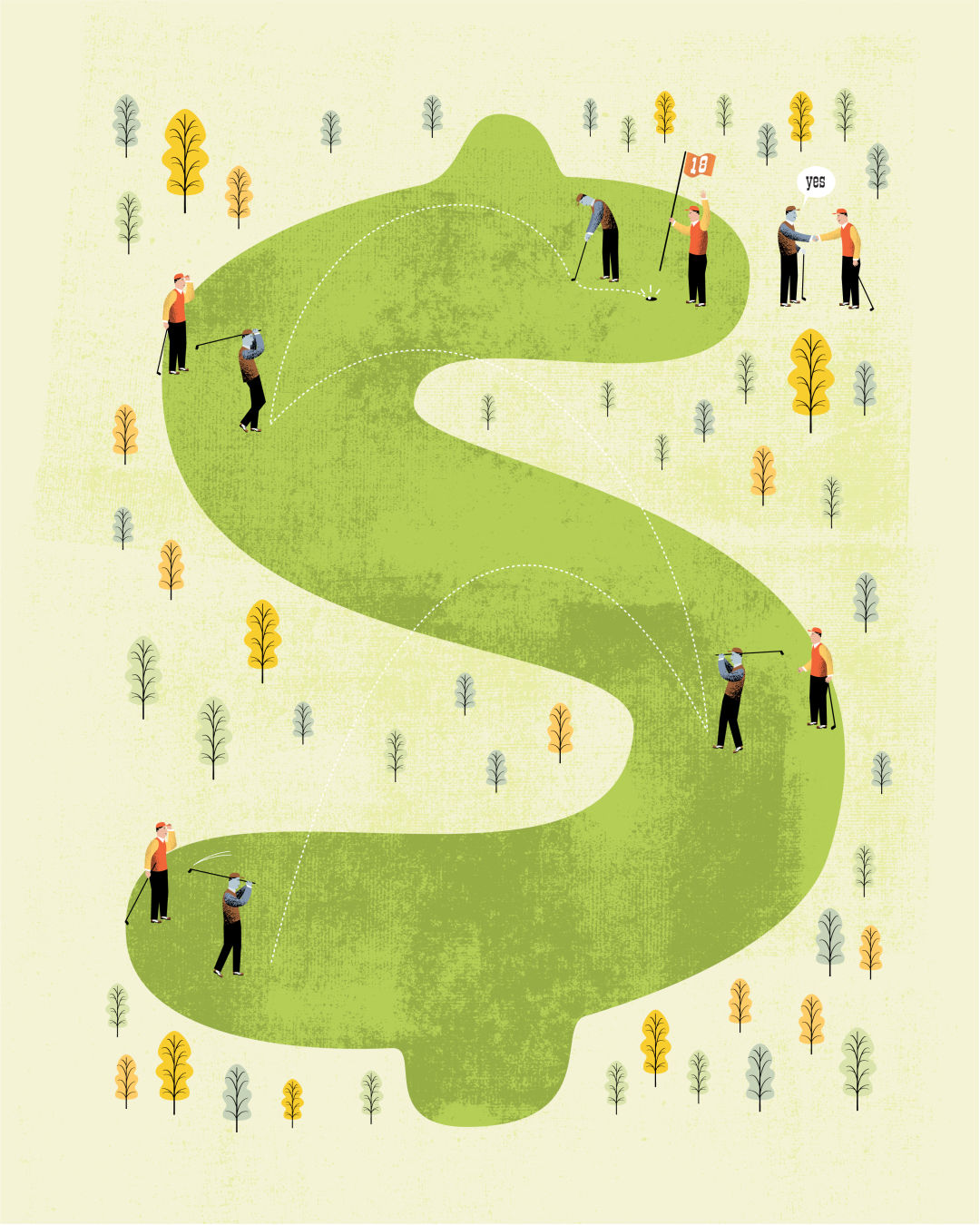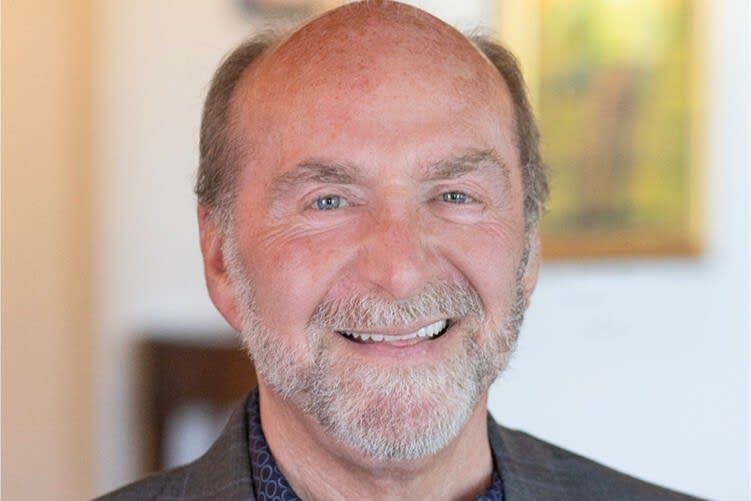It's a Great Time to Be a Golfer in Southwest Florida

Image: Michael Austin
As a young athlete in Sarasota, Andy Peterson had a choice of sports. He grew to 6 feet, 6 inches, and was fast and agile. If the game had a ball, Peterson excelled at playing it, so much so that he received a college scholarship for basketball.
But there was one sport Peterson always considered beyond his means.
“I thought you had to be loaded to be a golfer or be the member of some private club with secret handshakes,” says Peterson, 27, who now works in nursing. “There was no way I could afford it or even that the courses wanted guys like me.”
But for the last few years Peterson has been hooked on golf. It took him three years to break 100. Today, he shoots in the 80s. He honed his game by taking advantage of a summer discount at the Arnold Palmer-designed Legacy Golf Club in Lakewood Ranch that he says was more “cost-efficient than going to the movies.”
“I couldn’t believe how cheap it was,” Peterson says. “Plus, the staff values you and makes you feel appreciated.”
Peterson’s experience is not unique. There may never have been a better time to be a golfer in Southwest Florida—and that’s largely because there has never been a more challenging time for golf course owners, who are seeing too few players for too many courses.
“It’s a buyer’s market,” says Mark Bruce, co-owner of Play Golf Sarasota website and a PGA instructor. “It’s definitely swung to the player’s advantage.”
Statistics compiled by the National Golf Foundation show the magnitude of the game’s decline. The number of golfers who play at least one round a year has dropped from more than 30 million in 2006 to fewer than 24 million in 2015.
Through July, the number of rounds played in the Sarasota area was down 16 percent from a year earlier. (The unusually wet summer may have been a factor.)
Nationally, hundreds of golf courses have closed and few new ones, just 11 in all of 2014, are being built. Our area has 65 courses, more than twice as many as the mid-1980s. But in the past five years, six courses have shut down and only two new ones have opened, Bruce says.
Nike announced this year it would stop making golf clubs and balls. Golfsmith, the largest golf retail chain, filed for bankruptcy. Dick’s Sporting Goods fired its nearly 500 golf sales people and stopped selling clubs.
What ended the golf boom? Experts offer several explanations, including the overbuilding of golf communities, the Great Recession’s toll on consumer spending, the length of time it takes to play a round of golf, the game’s sheer difficulty, and even the fall of Tiger Woods.
Yet the decline is benefiting recreational players like Peterson—and me. Last spring, I decided to come back to the game after my wife gave me a summer membership, from May 1 to Sept. 30, to three Venice area golf clubs, which offered unlimited play, range balls and discounts at the pro shop. The cost: $283. That’s five months of golf for less than one night at a resort hotel.
That deal was exceptional, but it has never been easier to find a place to play. Websites and apps such as teetimes.com, teeoff.com and golfnow.com allow players to check rates and book times at dozens of courses. I’ve seen rates as low as $7. Courses are throwing in breakfast or lunch, and beer after the round. Clubs such as Misty Creek are waiving initiation fees for new members.
Still, I was ambivalent about sweeping the cobwebs off my clubs. I remember often finding myself on the seventh tee cursing another feeble shot that landed in the middle of a pond. My goal was not to be a champion. Rather, I wanted to become competent enough to join one of the many leagues around the area, which seemed like a great way to socialize, make friends and share a post-round beer and brat.
So I called Susan Fasoldt, director of instruction at Saddlebrook Golf and Country Club in Sarasota. I hoped she could squeeze me in. I started that week, and her rates were more than reasonable.
Bruce, the co-owner of Play Golf Sarasota, says the Professional Golfers Association (PGA) is trying to attract and retain players with a program called Get Golf Ready that includes five basic lessons for $99. In 2015, the program introduced 107,000 new players to the game.
“You don’t even need clubs,” Bruce says.
Golf in Southwest Florida essentially has three seasons, Bruce says, including the “shoulder season,” from October through December, when the weather is inviting, courses are uncrowded and bargains still abound.
“Peak season” runs from January through April 15, when prices are higher and tee times are not as flexible. The “summer season,” from late April through September, offers deals galore for players who brave the heat and rain.
Year-round, one of the anomalies of the local golf scene is that courses are more crowded on weekdays and open on Saturdays and Sundays.
“That’s because of the huge base of retirees we have down here,” Bruce says. “They’re free during the week to play but doing stuff on weekends. That opens it up for working folks to play on Saturdays and Sundays, when the courses up North are usually packed.”
For players who want exclusivity and luxurious amenities, the area boasts private clubs such as The Concession, the Ritz-Carlton Golf Club, the Lakewood Ranch Country Club, The Oaks, the Founders Club and others, where memberships can run from $50,000 to close to $100,000, Bruce says.
But we have plenty of public courses as well, many of high quality.
“Many are part of communities with homes priced at $150,000 or $250,000,” Bruce says. “They attract people from all walks of life who not only want to play golf, they also want to develop the friendships and the social connections that come with it.”
But for all that the golf industry is doing to boost interest, it still faces the formidable challenge of the game itself, which requires patience, skill, forethought and perseverance. Or, as a friend once told me, “Golf has three stages. You take lessons. You practice. You quit.”
“Will I ever get good at this game?” I asked Fasoldt in a moment of deep frustration.
“It depends what you mean by good,” she replied. “The goal is not to be perfect. It’s to enjoy yourself and to enjoy being with the people you are playing with.”
A round of golf can take three to four hours, which Fasoldt, unlike some of golf’s critics, views as a benefit.
“Golf is recreation, and most of us could use more recreation,” she says. “It gives our lives balance. Plus, it’s good exercise, you’re outdoors and it’s social.”
I’m convinced. Reasonable prices. Abundant places to play and practice. Clubs that value their customers. It’s a great time to be a golfer in Southwest Florida.
Now if I can just break 100.



